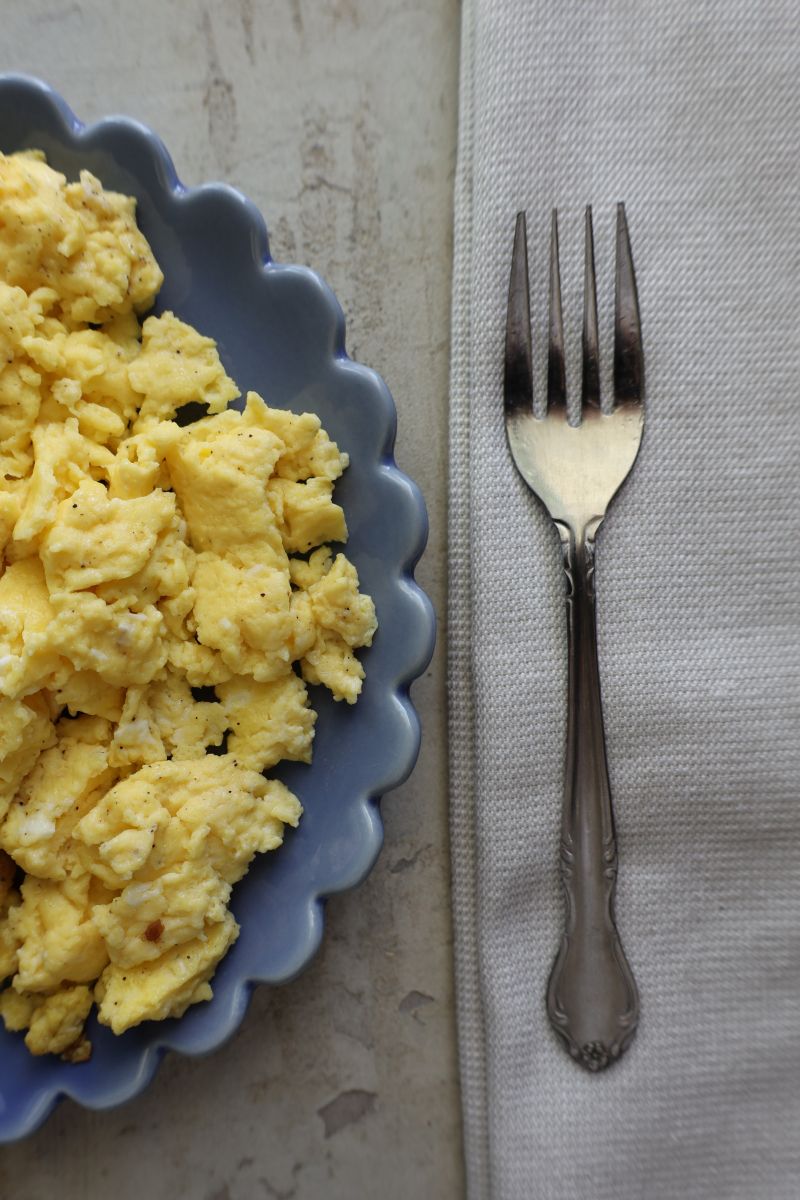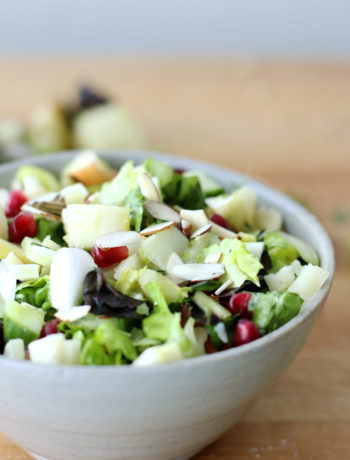Scrambled eggs are one of the most versatile and beloved breakfast staples, but sometimes the simple task of making them just right can feel a bit tricky. And turns out, the majority of Americans overcook their eggs. Whether you prefer your eggs soft and creamy or firm and fully cooked, mastering the art of scrambled eggs is a skill every home cook should have.
And if you’re looking to make the most of your eggs (while still achieving that perfect texture), there are some great tricks to stretch your eggs without sacrificing flavor. Today, we’ll explore two classic ways to make scrambled eggs—soft and hard scrambled—and how you can extend your eggs and improve their taste and texture with a variety of dairy ingredients.
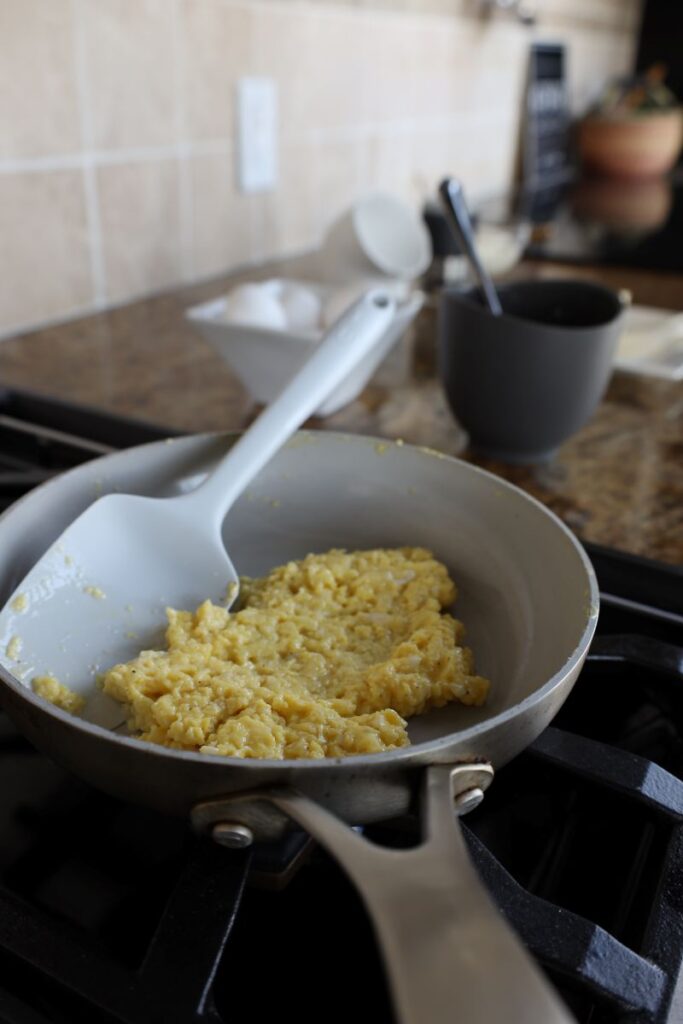
Soft Scrambled Eggs: The Creamy Dream
Soft scrambled eggs are rich, velvety, and almost custard-like in texture. They’re delicate and melt in your mouth, making them the perfect choice for a luxurious breakfast or brunch. We love spreading soft scrambled eggs on our avocado toast! Here’s how to make them:
Ingredients:
- 4 large eggs
- Salt and pepper to taste
- 2 Tbsp butter
Instructions:
- Whisk your eggs thoroughly in a bowl until fully blended. This ensures the yolks and whites are evenly mixed, giving you that beautiful soft texture. (Pst. We suggest you crack your eggs individually in a smaller before combining with the larger bowl, that way if one egg has an icky surprise inside you aren’t ruining the whole batch by dropping it straight in!)
- Heat your pan over medium-low heat. The key to soft scrambled eggs is cooking them slowly, so don’t rush this step.
- Melt one tablespoon of butter in the pan, making sure it coats the bottom evenly.
- Pour in the eggs and let them sit for a few moments, then begin gently stirring with a spatula. Keep the eggs moving continuously to avoid overcooking them.
- Cook slowly and gently. As soon as the eggs start to form soft curds, turn off or remove them from the heat and add in the last tablespoon of butter. The residual heat in the pan will melt the butter and finish the cooking, leaving you with silky scrambled eggs.
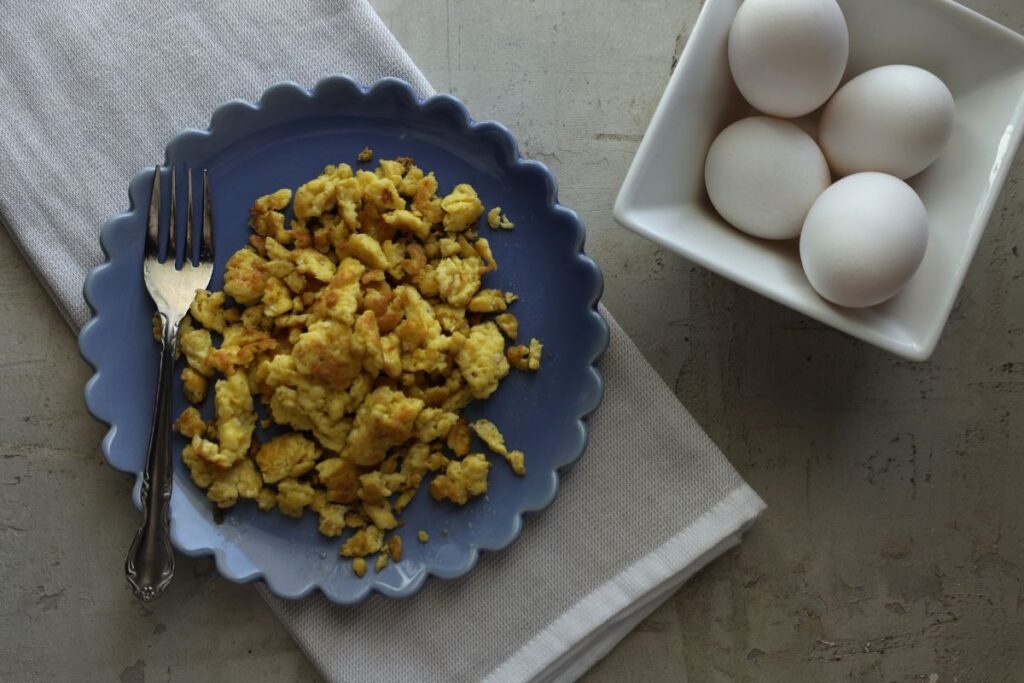
Hard Scrambled Eggs: The Firm and Fully-Cooked Classic
Hard scrambled eggs, on the other hand, are a bit firmer and more cooked through. They have a slightly drier texture compared to their soft counterparts but are still delicious and satisfying. The ingredients are the same, and you cook to a soft scramble, but then you add more butter and cook until you see some color starting to brown on your eggs. Color means flavor!
- Crack the eggs into a bowl and whisk them until the yolks and whites are well combined.
- Preheat your pan over medium heat and add butter or oil. The fat helps the eggs cook evenly and prevents them from sticking to the pan.
- Pour the eggs into the pan and let them sit undisturbed for a few moments.
- Stir the eggs gently but consistently. For hard scrambled eggs, you’ll want to keep stirring so the eggs cook through evenly. Continue to stir until the eggs are fully set and no longer shiny. Now add in your second tablespoon of butter.
- Finish cooking when the eggs reach your desired firmness and color, then remove from the heat immediately to prevent them from overcooking.
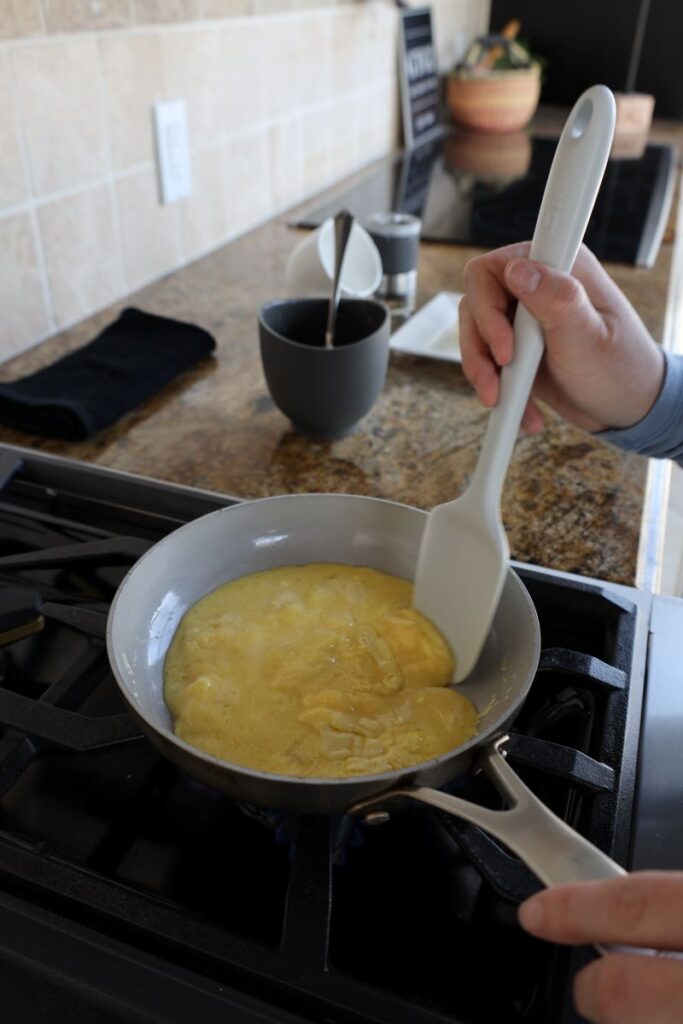
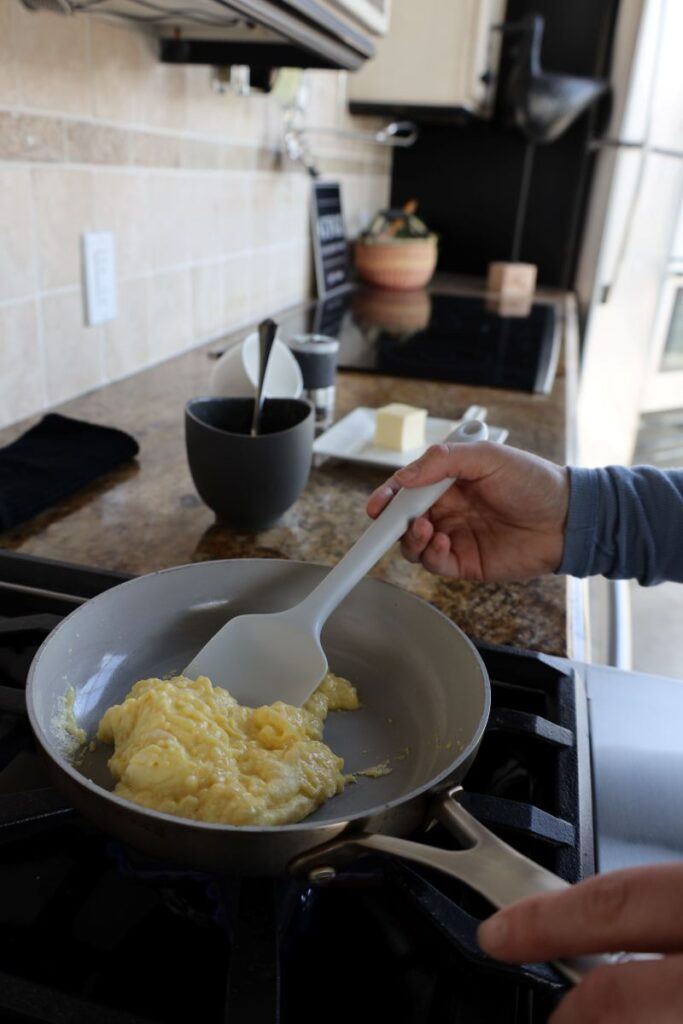
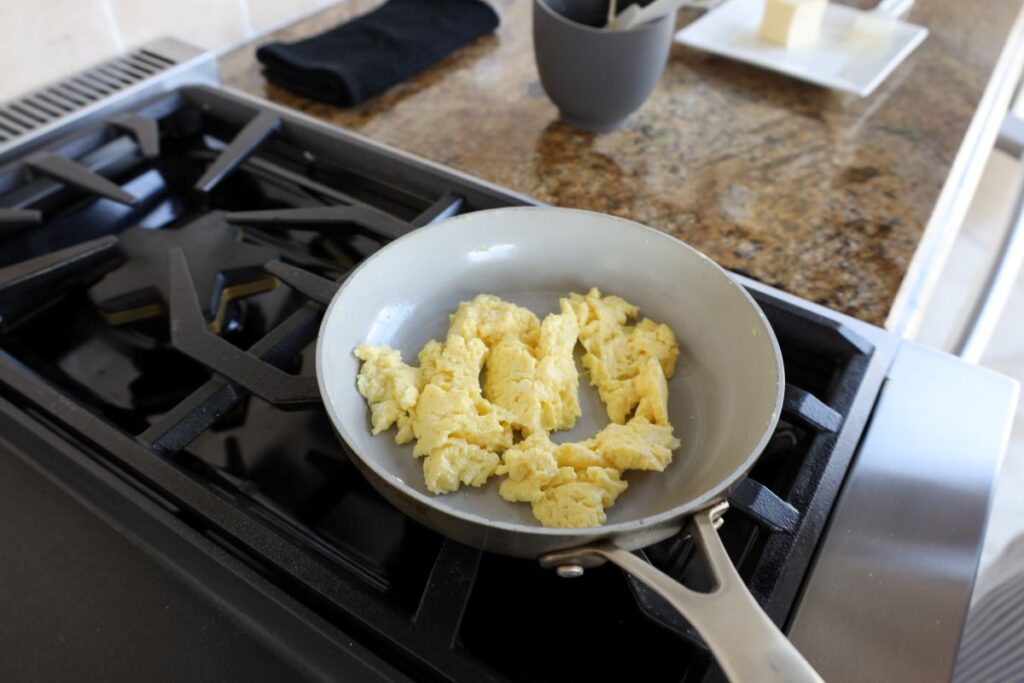
Stretching Your Eggs: How to Make Your Scramble Go Further
You definitely want the most bank for your buck. If you’re looking to stretch your eggs a bit further (whether to serve more people or simply make them go a little further without compromising quality), there are several ways to add a touch of dairy to enhance the texture and increase the volume of your scrambled eggs.
- Cream or Milk: Adding a splash of cream or milk is a classic way to stretch your eggs and make them more tender. The fat from the cream helps make the eggs softer and more luscious, while milk adds moisture for a lighter texture. For a richer result, opt for heavy cream.
- Ricotta Cheese: For a creamy, slightly tangy addition, try mixing in about a tablespoon of ricotta cheese per two eggs. Ricotta adds richness while helping to stretch the eggs, giving you a fuller scramble with a nice, fluffy texture.
- Cottage Cheese: A great way to boost your eggs without adding too much fat is by using cottage cheese. It gives the eggs a slight chewiness and a creamy texture, and its mild flavor doesn’t overpower the eggs.
- Greek Yogurt: Greek yogurt is another excellent option, offering both creaminess and a slight tang. It’s a fantastic dairy addition if you’re aiming to create a more indulgent scramble without needing too many eggs.
- Cream Cheese: A small dollop of cream cheese can also work wonders. It adds a luscious and slightly tangy flavor to your scramble while making them extra creamy.
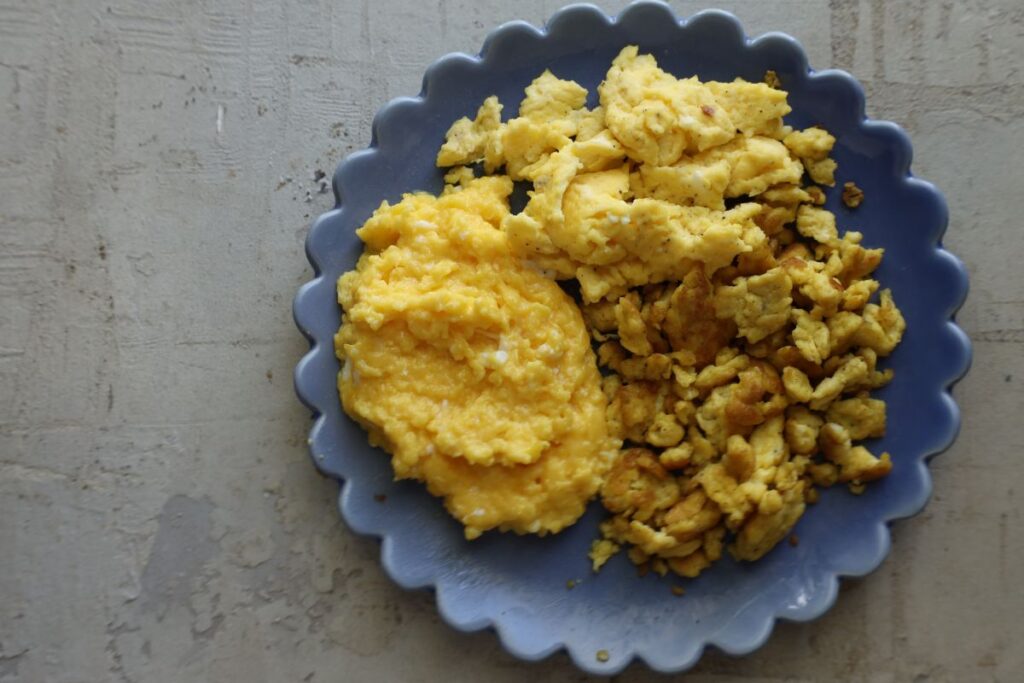
Tips for Making the Most of Your Eggs
- Don’t Overcook: Whether you’re making soft or hard scrambled eggs, the key is to avoid overcooking them. Eggs can go from creamy to rubbery in a matter of seconds, so be vigilant and remove them from the heat as soon as they reach your desired texture.
- Low and Slow: The lower the heat, the better the scramble. High heat leads to overcooked eggs, so take your time and cook them slowly over medium-low heat for the best results.
- Use Fresh Eggs: Fresh eggs make the best scrambled eggs—period. Fresh eggs are more flavorful and will give you the best texture, whether you’re making soft or hard scrambled eggs.
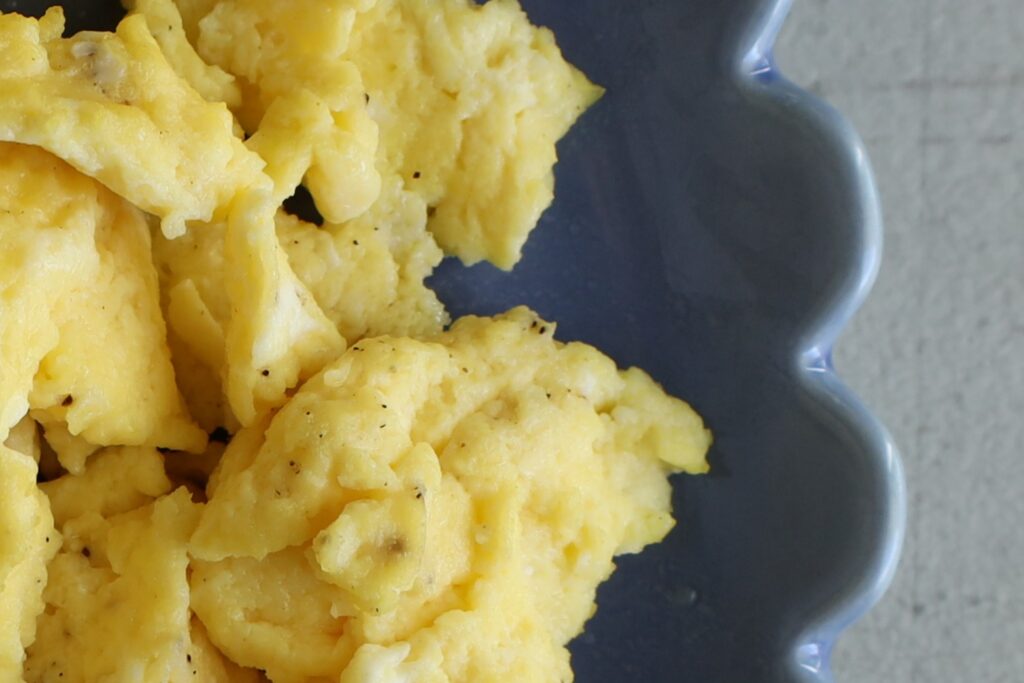
Scrambled eggs are a wonderful and versatile dish, but they don’t need to be complicated to be delicious. Whether you prefer them soft and creamy or firm and hearty, getting your scrambled eggs just right is all about the technique and the quality of the ingredients. By experimenting with different dairy additions like milk, cream, ricotta, or cottage cheese, you can stretch your eggs further and create a scramble that’s both satisfying and budget-friendly.
At Gygi, we believe in making the most out of every ingredient, and eggs are no exception. With a few simple tips and the right tools in your kitchen, you’ll be scrambling eggs like a pro in no time!
Pro Tip: Don’t forget to grab your spatula, a non-stick skillet, and a whisk from our store to ensure your scrambled eggs turn out perfectly every time!

